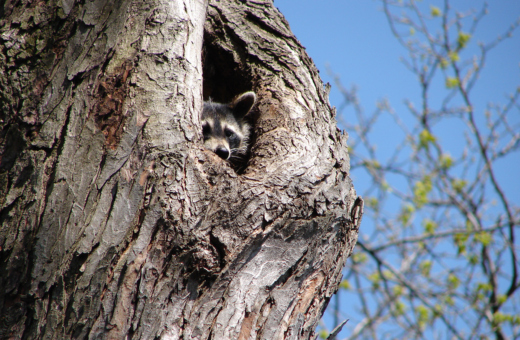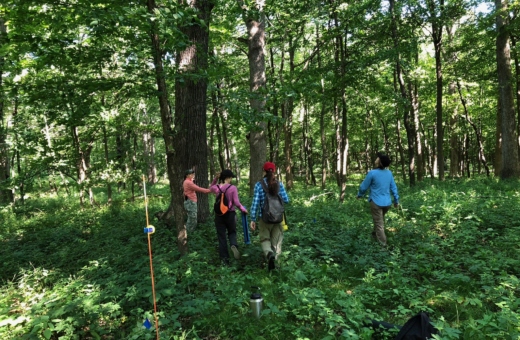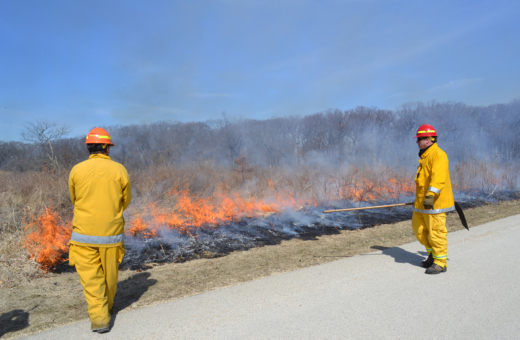June 11, 2024
Over the next couple of weeks, the piercing mating calls of periodical cicadas will subside. The cicadas will have mated and females will lay their eggs in the twigs of trees and shrubs. Then all the adult cicadas will die and the 2024 emergence of 17-year cicadas will be over.
In places that saw plenty of cicadas, it will be time to tidy up. Here are some suggestions from Stephanie Adams, plant health care leader, and the Plant Clinic.
Sweep them where they’ll do some good. Dead cicadas or the exoskeletons the nymphs shed when they emerged from the soil may accumulate on steps or sidewalks, especially around mature trees. Use a broom and dustpan to sweep them up. Instead of discarding the cicadas in the garbage or the landscape waste, scatter them on lawns or garden beds as fertilizer; their decay will enrich the soil and feed plants’ roots. The odor of decay will only last a couple of weeks.
Turn compost often. “Cicadas are a fine addition to the compost pile,” Adams said, but not alone. You will need to mix them with green plant material, such as weeds or lawn clippings, and brown material, such as dried leaves. Keep the pile moist and turn it often to aerate it so the insects break down more quickly. “An unturned pile of dead cicadas will stink more,” she said.
Remove netting from trees promptly. Ghostly trees swathed in fine netting to deter egg-laying cicadas have been a common sight in leafy parts of the Chicago area for the last few weeks. Once the cicadas are gone, remove the netting promptly. “Even though it’s mesh, it’s still blocking some sunlight from reaching the trees,” Adams said.
Use the netting for crafts. Both insect netting and tulle fabric are made of synthetics and are not recyclable. However, they are washable (cold wash and cool dry). If you don’t want to save the netting to protect plants against future pests, you can use it for crafts. Adams suggests hats, dolls, or ballet tutus.
Don’t rush to prune trees. If you see twigs with slits where cicadas have laid their eggs on shrubs or small trees, leave them alone for the time being. The twigs may survive. Even if they do eventually die and drop off the tree, the damage will be minimal.
Gardeners, give thanks. “Overall, a cicada emergence is probably a good thing for gardens,” Adams said. When the cicada nymphs tunneled up from their homes near tree roots in May, they aerated the soil. That made it easier for air to reach plant roots and beneficial organisms in the soil. The discarded exoskeletons and dead cicadas decay and provide nitrogen and other important nutrients to soil organisms and plants’ roots.
Keep trees healthy. The best advice for helping trees and shrubs recover from cicada damage is good advice anytime: Keep them healthy by watering and mulching. Plants are better able to handle any kind of stress—including slits in their twigs—if their general health is good because they have the resources they need. Water trees and shrubs regularly if they were planted within the last two to three years. In dry spells, water large, mature trees too. Spread an even, wide layer of mulch 3 to 4 inches deep around a tree, without piling it against the trunk. The mulch will insulate the soil against extremes in temperature, prevent soil moisture from evaporating, and protect the tree’s roots and trunk.
Watch for rabbit damage. You may see more damage to flower and vegetable gardens this summer and fall if rabbits and other plant-eating animals are more abundant. That’s because the predators that normally control their numbers, such as foxes and coyotes, have been feasting on cicadas and may not have been motivated to chase their usual prey. The best way to exclude rabbits from a part of your garden, such as the vegetable patch, is with a chicken-wire fence 2 feet high, buried 2 to 3 inches at the bottom edge to discourage tunneling.
Monitor trees for dieback. Twigs that were slit for eggs may eventually die, appearing as small spots of brown leaves distributed around a tree’s canopy. “The damage is less likely to appear this year, because the trees have stored resources,” Adams said. “You’re more likely to see it next year.” Because the egg-laying only affects small, easily replaced twigs, the damage is rarely serious except on some very small trees or shrubs. For the sake of appearance, you may want to prune dieback from small trees or shrubs. On large trees, the dead twigs and leaves will break off and fall by themselves in time.
Meanwhile, the eggs laid during this year’s emergence will hatch and the new cicada nymphs will fall to the ground. They will burrow down into the soil where they will live for the next 17 years, feeding on sap from tree roots. Then, in the spring of 2041, when the soil is warm enough, they’ll be back.



